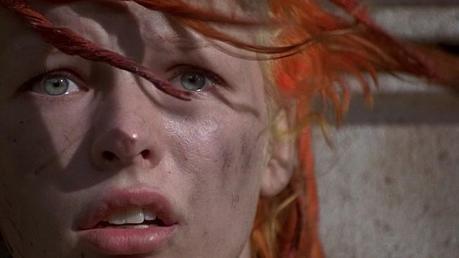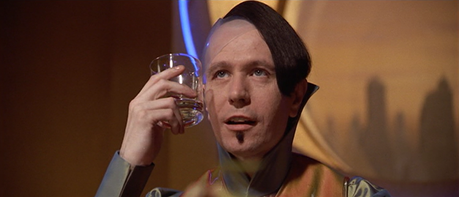Luc Besson claims to have never attended the cinema until the age of 16. Likewise, he once threatened to retire after making ten films (a threat not yet followed through on). For a director so apathetic towards cinema, Besson has been cited as a revolutionary force in French film, a pivotal figure in what critic Raphaël Bassan dubbed cinéma du look. Yet Besson has come under heavy fire by others who seat him not in the center a revival but in the center of a funeral—a murder of classic French art-house cinema. Besson, a perpetual outsider of film, is now strangely too popular, accused of dragging France, kicking and screaming, into the multiplex. A complex director who writes easy-to-watch films, Besson is a perpetual contradiction—a French director working in the Hollywood style, living in Paris (he has refused to move to Los Angeles), working with American actors and telling uniquely European stories. Besson may well be the most authentic euro-fusion auteur.
“Cinema never saved anyone’s life; it is not a medicine that will save anyone’s life. It is only an aspirin.”
– Luc Besson

In a widely-repeated narrative, Besson spent his childhood completely separate from the mainstream media. He parents were Club Med scuba instructors and Besson spent much of his time underwater, claiming to have never owned a TV until age 16 (“I was never polluted by the world of cinema,” Besson explained). Age 17 brought a diving accident and a complete shift in his life goals. After visiting a friend’s film set, Besson entirely changed paths and promptly filmed his first movie. During this time, Besson wrote the short story which would become his magnum opus, The Fifth Element.
On the surface, critic’s claims of Besson’s mindless Hollywoodism seems legitimate, particularly when applied to The Fifth Element (1997), Besson’s ninth film. The film is an action/comedy/romance (the trifecta of Hollywood genres), starring Bruce Willis, waifish Milla Jovovich, and reliable method actor Gary Oldman (already an established Besson villain, with his role three years earlier in the widely acclaimed Leon: The Professional [1994]). Essentially a morality play, of the pure-good Jovovich versus the pure evil Oldman (a contractor hired by someone/thing literally called the ‘Great Evil’), The Fifth Element is ultimately more complex than it appears. The titular ‘fifth element’ is Jovovich herself, a reconstituted mommy who is the key to stopping (or at least halting) the Great Evil that threatens the Earth every 5,000 years. The Great Evil can only be stopped by a combination of stones which represent the four classical elements, with the added element of Jovovich. Oldman’s villain is an industrialist hired by the Great Evil to destroy the fifth element, while Willis plays an ex-Special Op who finds himself guardian of Jovovich.
The characters run from one fantastical set to another, to “save the universe”, which Besson acknowledges as a sly, self-referential joke. “You have to make a joke with it,” he said about the film, “because it’s so classical.” But beyond the Flash Gordon get-up and the Star Wars jokes, The Fifth Element has an unusually complex moral—if it, in fact, contains one at all– that keeps Besson squarely out of the mainstream.

For Besson, the film’s two roots lie in two pessimistic pronouncements about life. “What’s the use of saving lives when you see what you do with them,” Jovovich pronounces, and we are inclined to believe Besson agrees with her. “That’s the demonstration of the film,” he says, “Even if it’s funny and there’s a lot of excitement and things, at the end after almost two hours, you say, ‘She’s right. What’s the use to save life when you see what we do with it?’”
Not exactly the words of a Hollywood blockbuster, which typically provide answers rather than questions. Besson is entirely uninterested in answering this nagging thought, although, of course, alls well that ends well in the film. The essential question remains unanswered. What IS the use? It’s a question that can only be answered by the audience, uneasily slipped into our drinks in the midst of an action-adventure.
The film’s second root meaning is in the parallel speech by Oldman, about life, which comes from, “destruction, disorder and chaos.” His speech, a manifesto of its own right, is delivered to Ian Holm’s priest for good reason. “You always see these Christian people, these religious people, always fighting for the noble cause,” Besson said in interview, “In fact they kill millions of people through history. They fight for a code, but they burn everybody for years. In the original draft of the screenplay, Oldman is more transparent, telling Holm, “I will never kill more people in my entire life than religion has killed in the past 2,000 years.”
In the script’s final draft, Oldman merely winks and promises, “In reality, you and I are in the same business.”


